Since I released the 'public alpha' of SCRAP in July of 2017, I have released 6 updates to the mod: changing balance, restructuring the map, and working out bugs. During that time, I have started a game design apprenticeship, joining the fine folks working at Dream Harvest Games to work on an RTS project called Failure: NeuroSlicers. This has led to an unfortunate lessening of the frequency of updates to SCRAP, as I take on design tasks for Failure. I still managed to find some time, however, which leads us to today: the 7th update to the SCRAP Public Alpha, and my first major content addition to the mod.
A Brief Introduction
Since the last time I wrote about SCRAP, I have actually released 4 patches: mostly, I publish patch notes on my Discord channel, or my MODDB page (this article will be transferred there soon after its initial publication). This is an oversight and I hope to use this article to address the problem. I'm going to go over the changes, and the reason for them, in detail... but first, since many people may not be familiar with the mod I thought I'd do a brief overview.
SCRAP is a tactical strategy game, a full conversion built in StarCraft 2's Galaxy Editor. It is (currently) a 1vs1 RTS battle, with players able to take the role of one of two factions. The Fabricators are industrial/construction robots, essentially mobile 3D printers, who use the resources they collect to build smallish armies of sturdy robots that primarily serve to augment the power of their central "hero" or primary unit. Each Fabricator player has one, and only one, Fabricator unit, which produces all units and builds all buildings for the faction: careful use of this unit is required to play optimally. Managing your build queues, keeping it on the backline building infrastructure when you can but bringing its area of effect damage abilities into fights when necessary. The Fabricator can easily be pulled out of position or have its Energy (mana) overtaxed, and using it well is pivotal to a player's success in the game.
The game's other faction is the Dendrites, and they couldn't be further from the Fabricators. They don't have a single core or key unit, and rely on swarm tactics, hit-and-run attacks, and disposable units to overcome their opponents. They produce fleets of Assemblers, large utility robots that expend themselves to physically convert into structures, units, and defensive turrets. Where the Fabricator's gameplay is about the careful application of a limited number of units, the Dendrites gameplay has a feeling of motion as you continually churn through your stock of Assemblers, turning them into tools that you can use to chip away at your opponent's advantages.
The players in SCRAP are fighting, primarily, over 3 things: Scrap, Energy, and Data. Scrap is the game's primary resource, and is used to purchase units, structures, and upgrades. Energy is the cost of participating in combat: many units use Energy as a sort of ammunition to fire their weapons, and the Fabricator requires Energy to summon new units onto the battlefield. Data is the game's victory resource: the first player to accumulate 650 Data will achieve sentience and win the game.
Players accumulate Energy and Data by capturing Generator Wrecks (basically, base locations) making the point of the game basically to capture and hold base locations. However, resources are often quite far from base locations, so players need to find a way to defend their holdings while still going out and aquring new resources with which to build and upgrade their armies.
There's, ah, more to it, but I've dragged this on long enough. Let's get to the updates.
Patch Notes
Some of the biggest changes to the game have happened in the last 2 months, so I'll focus on these first. With each change, I'll describe the reason for the change and the expected benefits.
Both factions got a new unit and a new structure (with a passive global effect) in the latest patch
Global Systems Changes
- Damaged Systems changed: now reduces incoming damage by 40% instead of 50%. Now increases affected units' move speed by 25% (instead of 0). Now decreases affected units' attack damage by 50% (instead of 0). Is now removed from affected units once they've been healed to 75% of their maximum health (instead of 100%)
- Damaged Systems is a global status effect in SCRAP mod. When a unit is damaged to 35% of its maximum health, its performance is drastically degraded but it is made more capable of escaping combat to be reparied and come back to fight more battles at a later time
- The problem with Damaged Systems is that it was a bit mis-targeted. In some cases, players *wanted* their units to have Damaged Systems applied, to serve as damage soaks for enemy fire. This is one of several changes I have implemented to make Damaged Systems more purely a bad thing for the affected player.
- Now, when units enter Damaged Systems, they are more able to escape (because of the speed boost) but are far less useful (due to the increased hit to DPS via the damage reduction). I made the unit slightly less durable, but didn't want to overdo it. If Damaged Systems is still percieved as a potential advantage after this change, I'll look into further reducing the damage resistance that units under its effects recieve.
- A future potential future change to this system is having the unit interrupt aggressors' targeting of the unit itself, and having the unit marked as Benign while Damaged Systems is active (meaning enemies wouldn't auto-target it)
- Structures now drop Scrap pickups as well as harvestable Scrap when they're destroyed. Creeps now drop Scrap pickups when they die, instead of harvestable Scrap
- Players noted that workers in SCRAP are uniquely harassable, especially for the Fabricator faction. It was relatively easy to get into a situation where you had no really good method to gain resources, and losing was just a matter of time. This change is the first step towards fixing that issue
- Also, armies often had nothing, or little, to do while the game was in a build-up phase. In a style similar to StarCraft, armies would just sit near a player's base, waiting for 'critical mass' before players would push out to attack an enemy.
- This change starts to weaken the relationship between harvesters and economy: now, armies can go out, kill creeps and buildings, and help the economy in their own way. Also, a player who has combat units but no (or few) harvesters can give themselves a little economy boost and get back into the game more easily.
- Creep Camps spawn a Data pickup when they die
- This was actually kind of already in the game: some units already dropped Data pickups upon death, to allow a player who's on the back foot to attempt to catch up to a player who's pulled ahead in Data generation. This change applies that concept to *all* creep camps, making creep camps an important early-midgame source of Data and Scrap: players can now race out onto the map to kill Creep Camps to boost their early economy and get a leg up on the competition
Fabricator Changes
The Switcher (bottom center) is a flexible new unit whose weapon actually changes based on what weapon the Fabricator has equipped. They can be good against air swarms, individual heavy attackers, or light ground swarms.
- Population limit increased to 64 (from 60)
- I came to feel that the Fabricators were too constrained by popcap: it becomes very difficult to field a balanced army in the late game. There are simply too many units and not enough ability to field them. This slight change allows basically one more Scrapper, or one more Absorber, or 4 more Censors, or 2 more Junkslingers.
- New Unit: the Absorber
- This is actually a slightly redone unit, more than a new one. The game launched with a unit called the Ram: it was a heavy damage soak that dealt area damage and slowed all units that it hit. Originally, many Fabricators players massed up on Rams because of their reliability, durability, and damage. It soon became clear though that the Ram was kind of boring, and furthermore it was a liability against Dendrite players' ability to mind control units. It needed a polish. Also, the name Ram didn't really fit the unit
- The Absorber is a redo on the unit's initial concept. It's still a heavy damage soaker, but now it's a bit more interesting to use (and to have it used against you). First off, the Absorber deals anti-air damage, as well as anti-ground. That's useful, but not exciting. Also, the Absorber interrupts spellcasting, making it much harder for enemies to mind control them on an even footing.
- The last and most important change is this: the Absorber now has a recharging energy shield. When that shield breaks, its damage and attack speed are both increased. This makes a damaged Absorber quite dangerous until it can be brought into Damaged Systems, making it important to either ignore them until higher-DPS targets have been killed, or to try and focus them down quickly early in a fight.
- HP of Censor, Absorber, Relay, Junkslinger, increased by ~15 each
- The balance between heavy-but-limited and many-but-cheap has been an interesting one for me to navigate. Many players currently view the Fabricators as the less powerful faction, and this slight recalculation of their HP-per-cost should lead to an overall better balance between factions.
- The Scrapper now ignores Damaged Systems and other non-armor damage reduction
- This was a tough one: ignoring armor is such a major step in a game like this, but I needed to give each faction ways to deal with players who abuse Damaged Systems for their own benefit. The Scrapper is the Fabricator's answer to Damaged Systems (more units will be coming along this line eventually).
- The Scrapper's weapon ignores any damage reduction applied on top of armor. So, its weapon will completely ignore the 40% damage reduction from Damaged Systems, or the ~20% damage reduction applied by Relays using Defensive Protocols. Its weapon is still affected by armor
- This feels a little confusing, but I hope that it'll bear out well in the long run
- The Junkslinger's damage has been reduced to 18 (from 21).
- Junkslingers are the Fabricator faction's glass cannon - in fact, even with this change, the Junkslinger still has one of the highest DPS related to cost in the game (while it has energy). However, with this unit poised to take the biggest advantage from the Fabricator's popcap increase, I had to change it. It's still fearsome, but won't melt enemy units with the same alacricty
- Tier 3: new research (Metallics Research), new structure (Scrap Foundry), new unit (Switcher)
- One of the core tenants of SCRAP was always 'hard choices' - I want players to make decisions they're going to feel when they make them. And now, finally, I'm starting to build that into the game. In SCRAP, players will have a choice when it comes to high-tier units. They will basically commit irreversably to a tech path at tier 3, choosing one set of units, upgrades, and structures to unlock. Once that choice has been made, it's not able to be rescinded in match. I'm starting to build out the first of each faction's Tier 3 tech paths in this patch.
- The core of this is the Metallics research. This research unlocks the Scrap Foundry structure, with its attendant upgrades, passive abilities, and units. In the final product, there will be another path to choose with a completely different set of units (etc etc) resulting from it.
- The Scrap Foundry allows players to upgrade Scrappers into Switchers. It also has a passive effect, increasing the armor of all Recyclers by 4 and applying a 25% Time Scale to all Recylcers, enabling them to build units and use abilities that much faster. It'll do more stuff in the near future.
- Switchers are a unique unit. Their active weapon is tied directly to that of their parent Fabricator, allowing them to actually change what units they're good against with a quick research from the Survival Module. They can wield the Cascade Arc, which attacks air, interrupts spellcasting, and deals damage to groups of units at close range; the Impact Driver, which is a long-range single target weapon that deals bonus damage to Armored units; or the Laser Array, which deals damage at long range to groups of Light ground units.
Dendrite Changes
The Dendrites' new unit is the Suppressor, a flying unit that stacks a move/attack speed debuff on groups of enemy units. It might not sound too powerful, but it has a deceptively cumulative effect on the enemy
- Assemblers and Current Cores now spawn more Currents
- The Current is in a weird place right now, and always has been. It's a summoned unit, spawned in large groups from Assemblers as an active ability. They speed up harvesting for Receptors, deal damage to enemies when they explode, and their plentiful making them good damage soakers for Dendrite armies. But, they always either seem useless or over-powered, and it's been a huge struggle to get them right. With all of the changes to both factions, I'm opening them up a bit again: they move fast, hit decently hard, and now can spawn in ridiculous numbers with proper upgrades. I hope they start seeing more use again.
- The cost of this ability was also cut in half to encourage its use (from 150 to 75 Scrap)
- Harbingers now do 10 damage per volley (up from 8)
- Harbingers have likewise been in a weird place. They have phenomenal DPS, but melt to any AA fire. They're fast and brutal harassment units, but like Currents their either completely dominant or completely useless. Several patch changes have balanced out their counters, making them more reliable and earlier to access, so I'm willing to risk them being a little more useful again.
- Needler attacks ignore non-armor damage reduction; refire rate reduced to 5.25 seconds (from 5.5)
- Many of the Dendrites units were in a weird place, as it turns out. Needlers are snipers that players are intended to mass: they don't do much in small groups, but have a pretty nasty single-shot damage in groups of 9 or more (they're summoned in groups of 3 by the way). Their over-time DPS is low due to a low rate of fire, as well. In an attempt to make them more attractive, now they're better at killing armored targets due to their innate bonus to Armored units. Now, they also ignore Damaged Systems. Great for finishing off weakened targets and focusing heavy enemies. Hopefully they'll see some more use now.
Arc Field firing off against neutral Harbingers and Needlers (note the blue lightning clouds around 2 of the Harbingers near the center of the image)
- The Assembler gets a new ability: Arc Field
- Dendrites have decent AA options (Needlers, Currents) but Harbingers were always a sticking point in Dendrite matches. Partially as a response to Harbingers, and partially as a general-use area ability, I've added Arc Field.
- Once the Dendrite player owns a Consensus Buffer, Assemblers can drain Energy over time to deal recurring damage to 3 units within a 10 range radius. Each attack does little damage by itself, but with multiple Assemblers it definitely adds up over time. Also, each friendly Current in the area increases the ability's damage, which makes having even a couple Currents mixed into combat more useful.
- Good against small-to-medium groups of air units, or en masse against the smaller armies of Fabricator forces. Less useful unless you commit pretty heavily to it in terms of Energy expenditure across multiple Assemblers.
- New upgrade: Quantum; new structure (Quantum Core); new unit: Suppressor
- I explained how the branching tech path will work, above. Dendrites react slightly different to this than Fabricators: while -individual- Fabricator units will upgrade themselves into a Tier 3 version of that unit (much like how Zerglings upgrade into Banelings) Dendrites just produce them from Assemblers like with every other unit. This means that the Dendrite method is more streamlined, but Fabricators will be able to retroactively gain access to Tier 3 units while Dendrites will have to plan ahead for it: of course, they have more popcap to play with, as well.
- The Quantum Core is in a way a defensive structure: it allows all friendly Axons to generate what I call the Warden Aura: units and structures in range of Axons will gain a temporary force field and health regeneration
- Suppressors will have a pernicious effect on combat: Dendrites use a debuff called the Dampener Effect to lower the effectiveness of enemy armies. Without the Suppressor, it can be hard to lure enemies into range of the Dampener Effect: an upgrade can allow Imbuer units to generate it, and there's a turret that can apply it to enemies, but the Suppressor can do it at range, and bring the pain of the Dampener Effect to enemies wherever they are. It should be interesting to see how this makes fights play out: the upgraded Dampener Effect decreases move speed, attack speed, and applies a stacking debuff to attack damage, as well.
Direction
Where do I go from here? I'm targeting my efforts in the short term towards adding the rest of the planned units, upgrades, and abilities from each of the 2 Tier 3 tech branches introduced in this patch. Each faction, after this patch, will see 1 new ability, 3 new upgrades, and 3 additional new units.
After that's done, I'll be ramping up efforts to onboard new players: I have a sort of active tips system in place of a tutorial, but it's only in the very early stages right now. I'm going to work on building that out more. Alongside this, I'll be working on a single-player version of the map for new players to learn on. I'm hoping that the combination of these two things will go a long way toward improving the new player experience.
Lastly, I'll be working on a new version of the map, each faction's second Tier 3 tech path, and an overhaul of the implementation of Scrap and Energy. Scrap's current implementation discourages players from expanding early, so I'll be slightly changing how that works to get players out on the map contesting objectives earlier. And Energy doesn't have enough impact on combat yet: I want a player deprived of Energy for their units to hurt, to want to run away. I'll be looking at how each faction, and each unit's reliance on Energy works, to increase the importance of this system in the game.
Thanks for reading. I hope to see you on the battlefield.
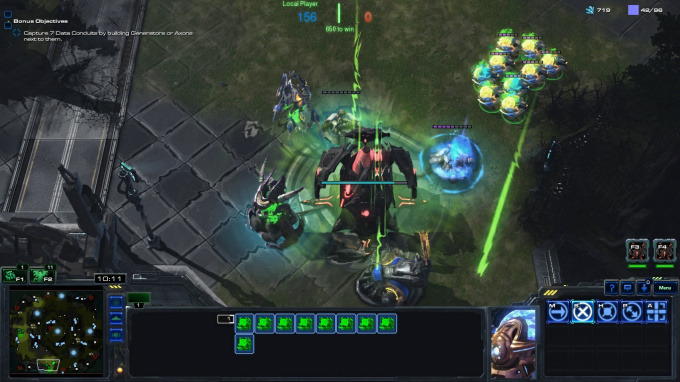

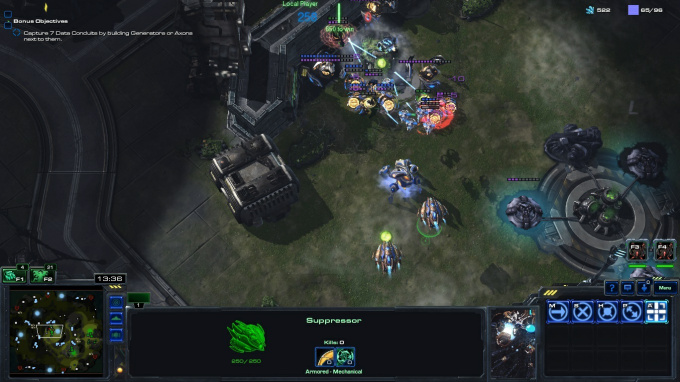
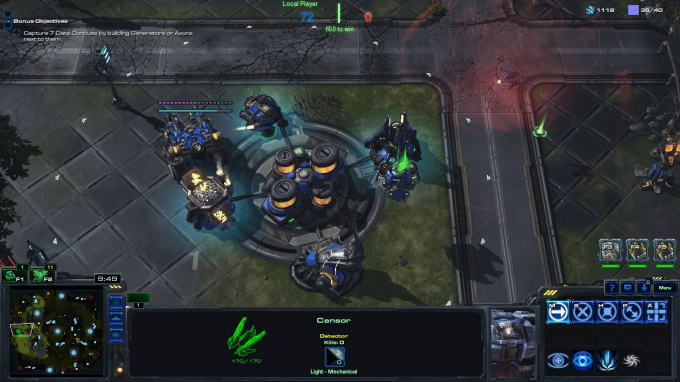
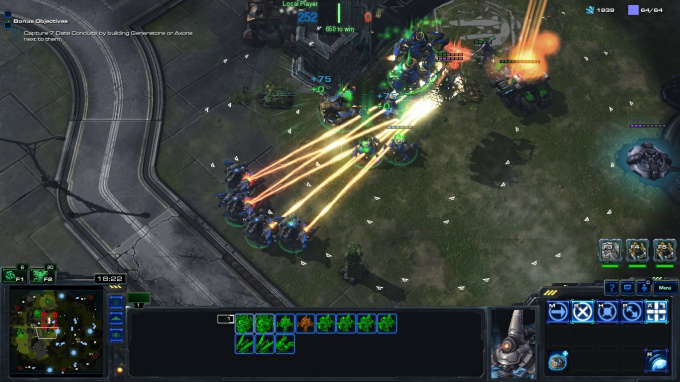
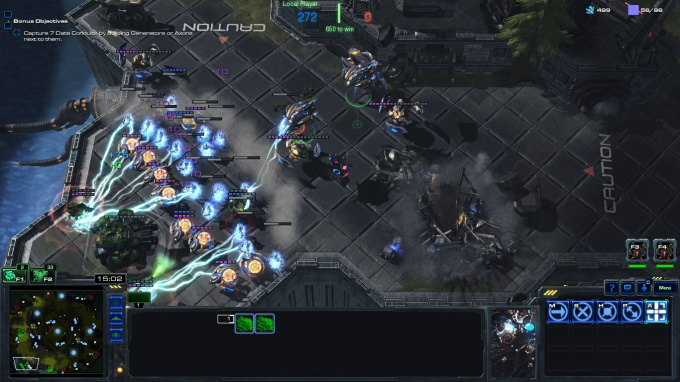
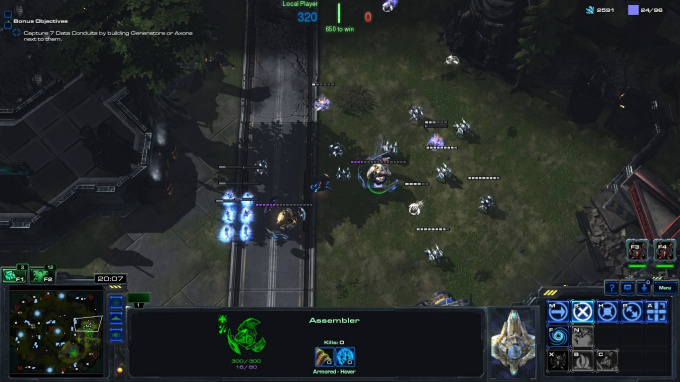
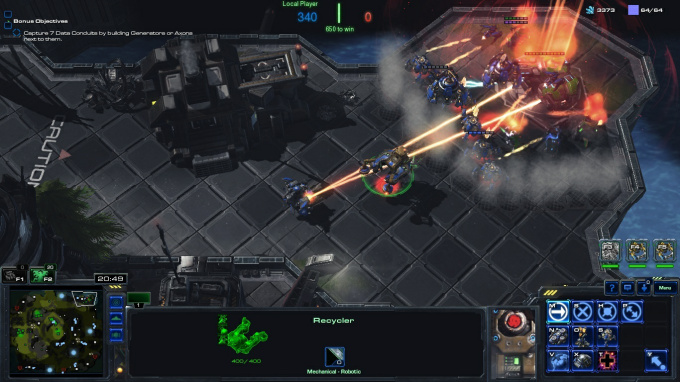


Why is this on DB Testing?
Sorry! I had a little trouble with the categories. I had to try to post this a couple of times before I got it to work. I'll remove it if I can.